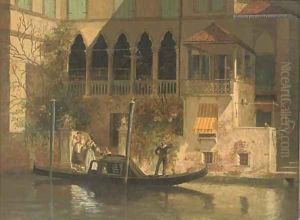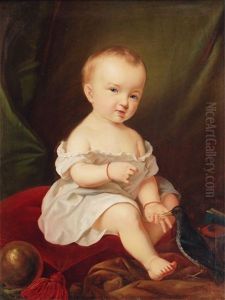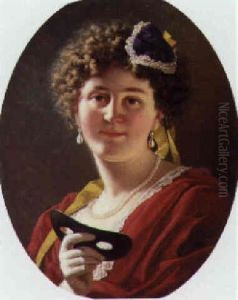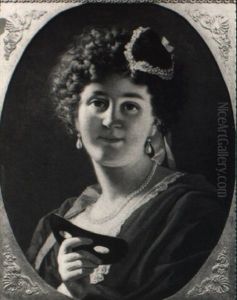Johann Adolf Brandeis Paintings
Johann Adolf Brandeis was a German painter known for his portraits, historical subjects, and genre scenes. Born on August 31, 1808, in Frankfurt am Main, he was part of the early 19th-century Romantic movement that was prevalent across Europe. During his lifetime, Brandeis was influenced by the works of the Old Masters, as well as by his contemporaries who were exploring new ways of expression through art.
Brandeis showed an early aptitude for art, which led him to pursue formal training. He studied at the Städelsches Kunstinstitut in Frankfurt, where he honed his skills and developed his distinctive style. His works were characterized by their detailed realism and often contained elements of emotion and drama, trademarks of the Romantic era's emphasis on expressing the sublime and the individual's experience.
In the 1830s, Brandeis traveled to Italy, which was a common practice for artists of the time. The Italian sojourn was considered an essential part of an artist's education. There, he was particularly taken with the Italian Renaissance masters, and their influence is evident in his approach to composition and his treatment of the human figure.
Upon returning to Germany, Johann Adolf Brandeis became an active member of the art community. He participated in exhibitions and garnered a reputation as a respected portraitist. His ability to capture the likeness and personality of his subjects made him popular among the bourgeoisie and nobility, who were keen to commission portraits from talented artists.
Throughout his career, Brandeis also explored historical painting, which was a popular genre in the 19th century. These works often depicted scenes from German history or literature, resonating with the burgeoning sense of national identity at the time. His genre scenes, which illustrated everyday life with a sense of idealism and nostalgia, were also well received by the public.
Johann Adolf Brandeis continued to work and exhibit his art throughout his life. His contributions to German art in the 19th century were recognized by his peers and by art historians in subsequent generations. Brandeis passed away on July 18, 1879, in Frankfurt am Main. His legacy is preserved in the collections of various museums and in the works that remain in private collections. Although he may not be as widely known as some of his contemporaries, his work offers valuable insight into the Romantic period and the cultural milieu of his time.






